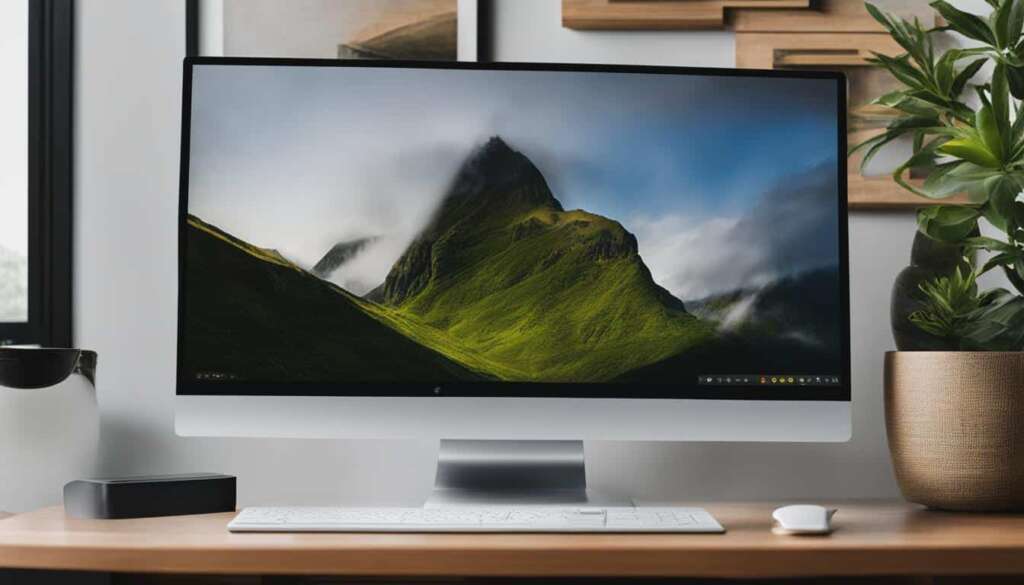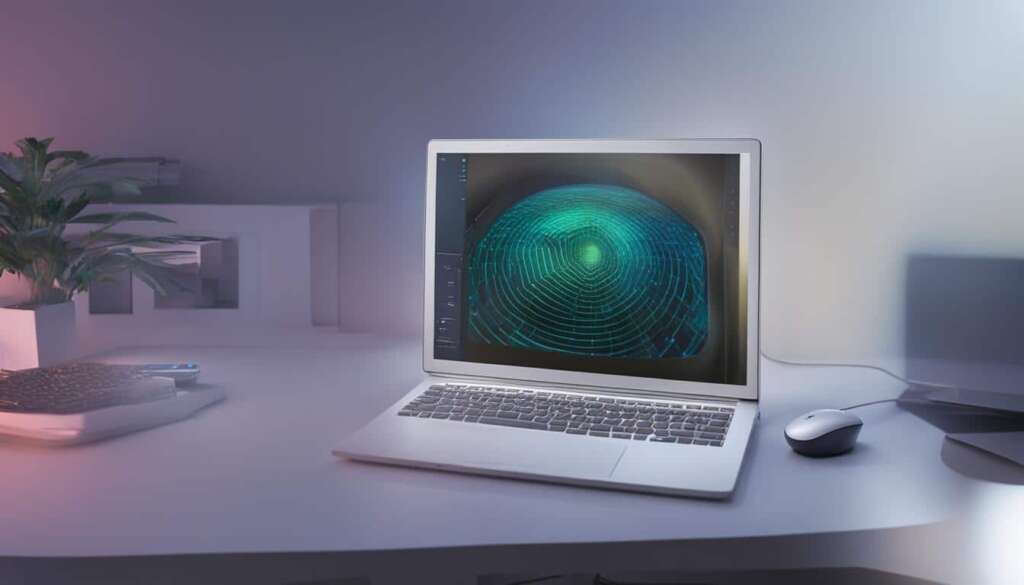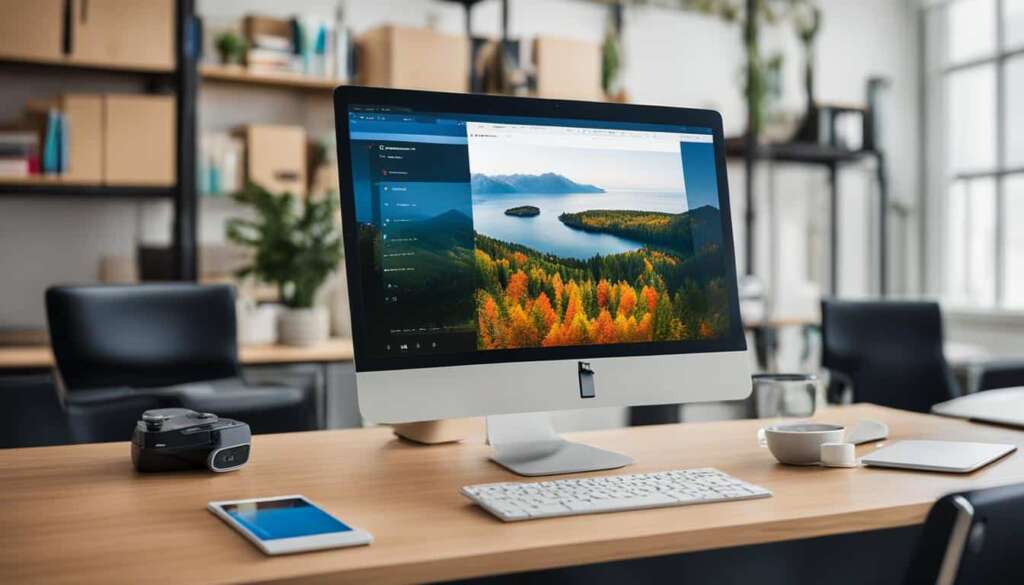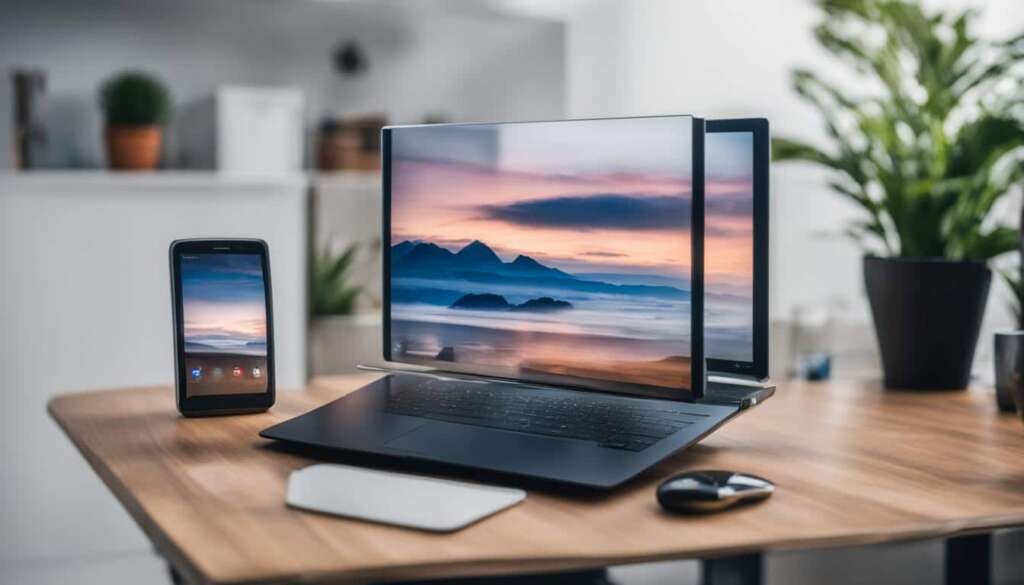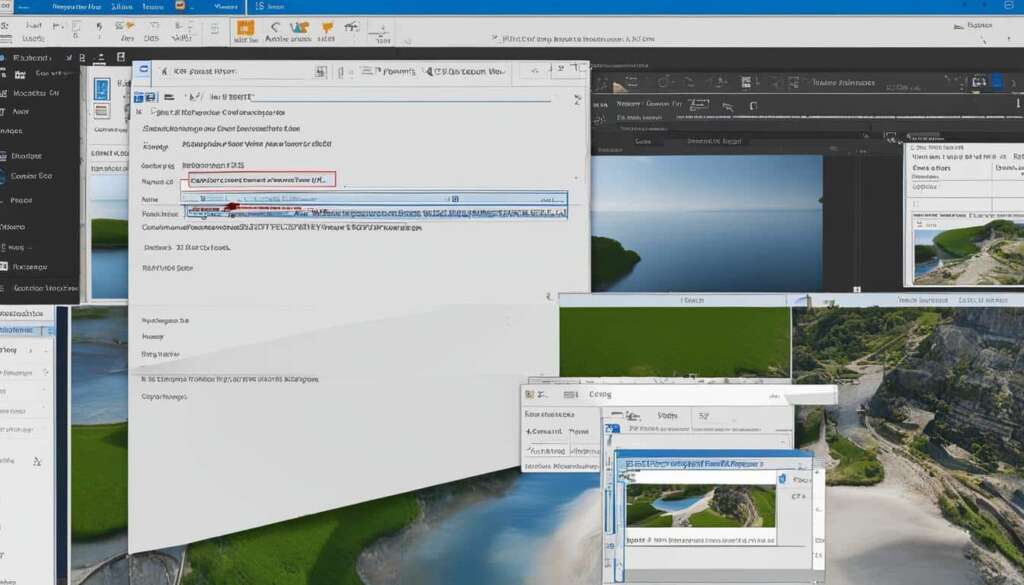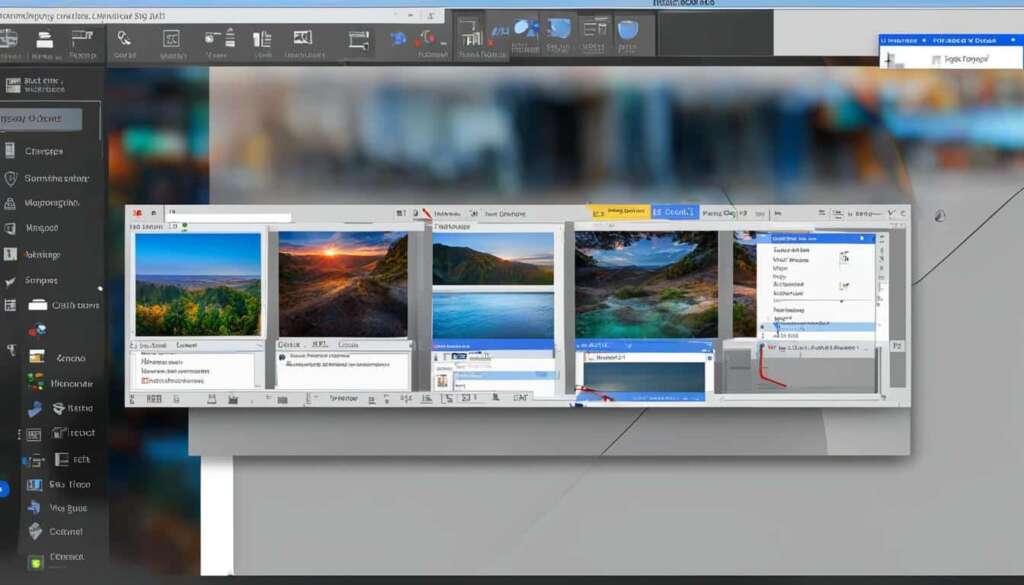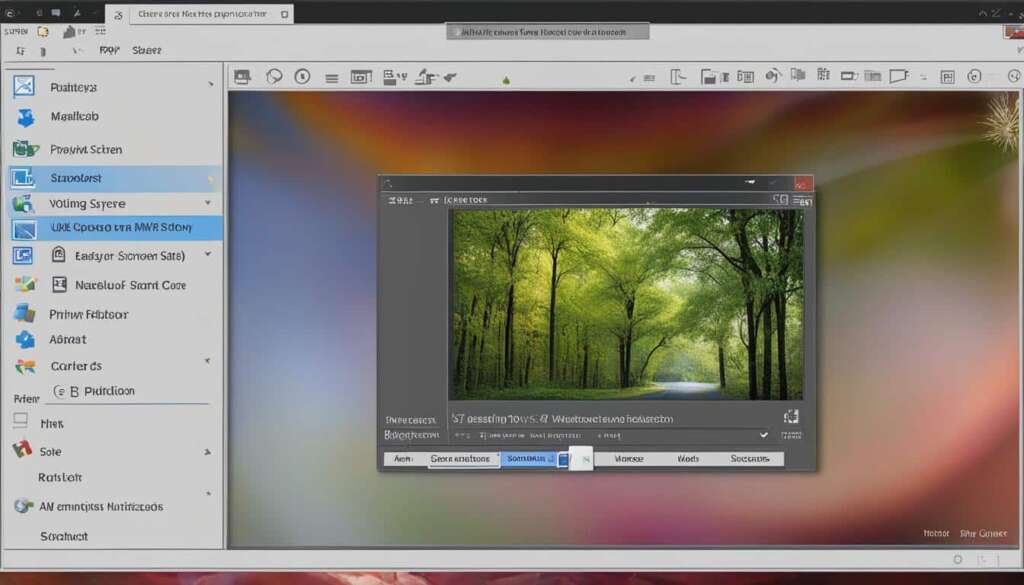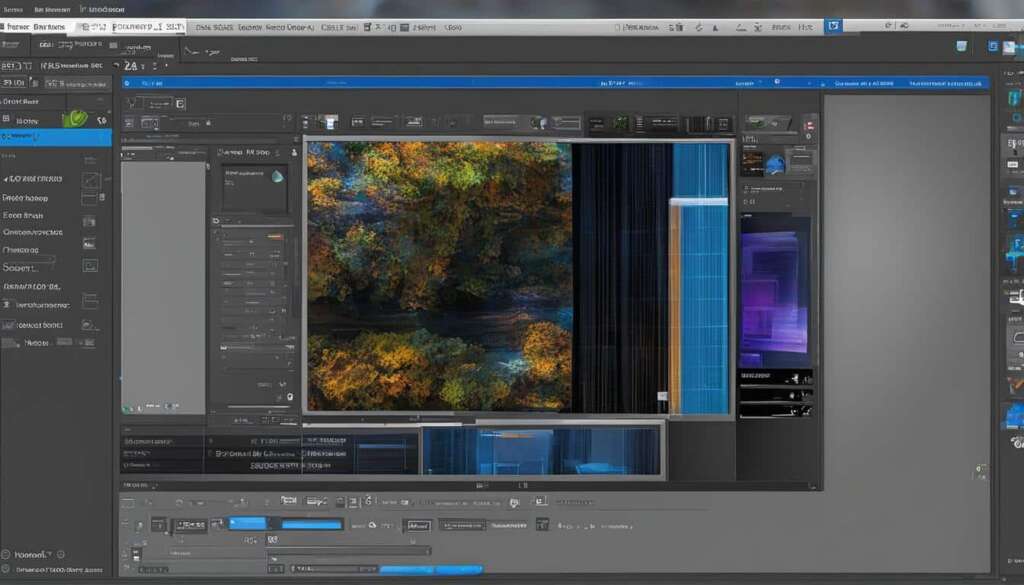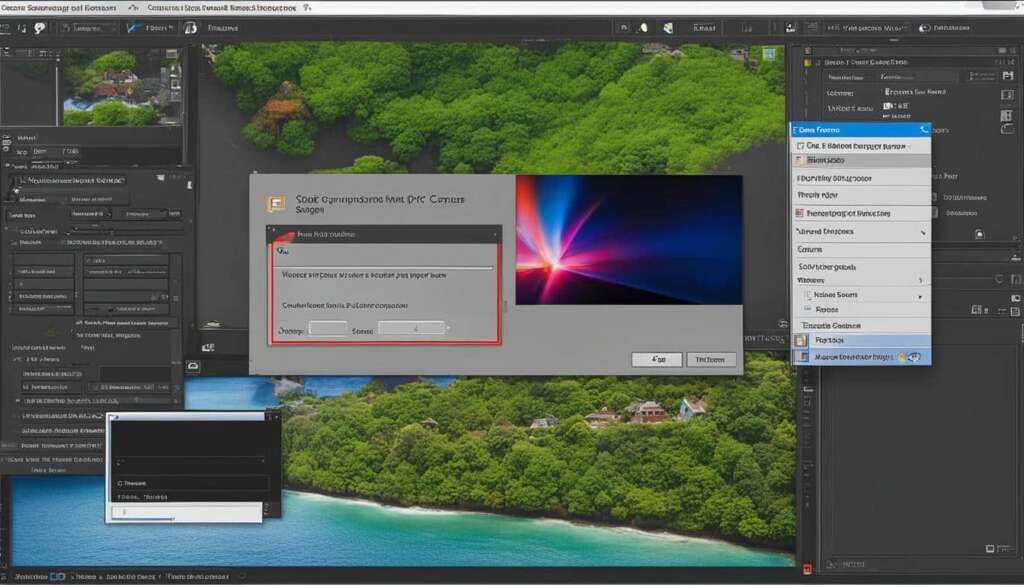Table of Contents
Taking a screenshot on your PC is a valuable skill for capturing and sharing information, whether it’s for work, personal use, or troubleshooting. In this article, we will explore various methods to capture your screen on Windows 10 and 11, providing you with screenshot tips and tricks.
Windows 10 and 11 offer built-in tools and shortcuts that make taking screenshots quick and effortless. One popular option is the Snip & Sketch tool, which provides easy access, sharing capabilities, and annotation features. Whether you want to capture a specific area, a window, or the entire screen, Windows has you covered.
Let’s dive into the different methods and tools you can use to take screenshots on your PC and become a screenshot pro!
Before we proceed, let’s take a sneak peek at the Snip & Sketch tool, one of the most versatile and user-friendly screenshot tools available on Windows 10 and 11.
Next up: How to Use the Snip & Sketch Tool
How to Use the Snip & Sketch Tool
The Snip & Sketch tool is a convenient and user-friendly option for capturing screenshots on Windows 10 and 11. To access the Snip & Sketch tool, you can use the keyboard shortcut Windows key + Shift + S or find it in the Start menu or notification panel.
The tool allows you to choose between taking rectangular, freeform, window, or full-screen screenshots. After capturing a screenshot, it is saved to your clipboard and can be opened in the Snip & Sketch app for annotation, saving, or sharing.
The Snip & Sketch window can also be opened separately from the small panel at the top of the screen, allowing you to delay a snip for 3 or 10 seconds.
Snip & Sketch Shortcut Key:
- Windows key + Shift + S
Step-by-Step Guide:
- Press the Windows key + Shift + S on your keyboard or find the Snip & Sketch tool in the Start menu or notification panel.
- Select the type of screenshot you want to capture:
- Rectangular: Allows you to capture a specific rectangular area on your screen.
- Freeform: Gives you the freedom to draw a custom shape around the area you want to capture.
- Window: Enables you to capture a specific window or application.
- Full-screen: Captures the entire screen.
Alternative Methods for Taking Screenshots on Windows
In addition to using the Snip & Sketch tool, there are other methods available for taking screenshots on Windows. Let’s explore these alternative options:
Snipping Tool
The Snipping Tool, a longstanding feature since Windows Vista, is still available in Windows 11. It offers a range of snipping options, including rectangular, freeform, full-screen, and window snips. With the Snipping Tool, you can easily capture the specific area of the screen you want to save or share.
Print Screen
The Print Screen key is another simple way to capture a screenshot on Windows. Pressing the Print Screen key captures the entire screen and saves it to the clipboard. You can then paste the screenshot into an image editing tool, such as Microsoft Paint or Adobe Photoshop, to save and edit it as needed.
Windows key + Print Screen
For a more convenient option, you can use the Windows key + Print Screen combination. This shortcut captures the entire screen and automatically saves the screenshot to the Pictures > Screenshots folder on your computer. It eliminates the need to manually paste the screenshot into an image editing tool.
Alt + Print Screen
If you want to capture only the active window, you can use the Alt + Print Screen shortcut. This combination captures the currently active window and copies the screenshot to the clipboard. From there, you can paste it into an image editing tool or any other application that accepts image pasting.
These alternative methods provide flexibility and convenience when it comes to taking screenshots on Windows. Choose the method that best suits your needs and workflow.
With these screenshot options at your disposal, capturing images of your screen on Windows becomes a breeze.
Taking Screenshots on Other Devices and Platforms
Taking screenshots on smartphones and tablets depends on the specific device and operating system being used. Generally, pressing the power key and the home button simultaneously captures a smartphone or tablet screenshot, which is then saved to the device’s gallery.
For Android devices, you can also use third-party screenshot apps or the Windows Key+Shift+S hotkey to capture screenshots. On Apple iOS devices, the Command+Shift+3 combination captures the entire screen, while Command+Shift+4 allows you to select a specific area.
In addition to screenshots, some devices and systems support screen recording, which can be useful for capturing videos of the screen. On Android phones or older iOS phones, you may need to use third-party apps to enable screen recording. However, Apple iOS 11 and later versions have built-in screen recording capabilities accessible through the control panel.
FAQ
How do I take a screenshot on a PC?
There are several methods you can use to take a screenshot on your PC, including using the Snip & Sketch tool, the Snipping Tool, the Print Screen key, the Windows key + Print Screen combination, the Alt + Print Screen shortcut, and the Game bar.
How do I use the Snip & Sketch tool to take a screenshot?
To use the Snip & Sketch tool, you can press the Windows key + Shift + S on your keyboard, find it in the Start menu or notification panel, or open the Snip & Sketch window separately. The tool allows you to choose between rectangular, freeform, window, or full-screen screenshots. After capturing a screenshot, it is saved to your clipboard and can be opened in the Snip & Sketch app for annotation, saving, or sharing.
What are the alternative methods for taking screenshots on Windows?
In addition to the Snip & Sketch tool, you can also use the Snipping Tool, which is available in Windows 11 and offers options for capturing rectangular, freeform, full-screen, and window snips. The Print Screen key captures the entire screen, while the Windows key + Print Screen combination automatically saves the screenshot to the Pictures > Screenshots folder. The Alt + Print Screen shortcut captures the active window and copies the screenshot to the clipboard.
How do I take a screenshot on a smartphone or tablet?
The method for taking screenshots on smartphones and tablets varies depending on the specific device and operating system. Generally, pressing the power key and the home button simultaneously captures a screenshot, which is then saved to the device’s gallery. For Android devices, you can also use third-party screenshot apps or the Windows Key+Shift+S hotkey. On Apple iOS devices, the Command+Shift+3 combination captures the entire screen, while Command+Shift+4 allows for selecting a specific area. Some devices and systems also support screen recording for capturing videos of the screen.


